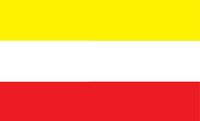2011 Libertas insurgency
| 2011 Libertas insurgency | |||||||
|---|---|---|---|---|---|---|---|
 | |||||||
| |||||||
| Belligerents | |||||||
|
• Supported by: • |
• • • • | ||||||
| Commanders and leaders | |||||||
|
• • • |
• • | ||||||
| Strength | |||||||
| • 20 | • Unknown | ||||||
The 2011 insurgency in Libertas was a military conflict involving several militias and factions which attempted to overthrow Harry Fitzpatrick and his government of Libertas and its predecessor states.
Libertas was founded on by Harry Fitzpatrick on 31 May 2011 as the nation of Monovia. Kaestrovia, a rebel nationalist group, began to attempt to overthrow Harry Fitzpatrick and implement their own strict laws right from the start of the nation. During the summer (May - August) of 2011, Kaestrovia was able to take over a large part of Monovia, but were eventually defeated by Fitzpatrick and government loyalists who overran the Kaestrovian base in the local forest. Kaestrovian remnants continued to fight on as insurgents under their leader, Colonel Sam Symons. A part of Monovia was unilaterally declared independent as the State of Chinobe by its leader Governor Lewis, and was aided by the Kaestrovian insurgents in its battles for secession. The Chinobean secessionists become known as the Chinobean Liberation Front (CLF).
In early September, Monovia transitioned into the Islamic Emirate of Amir. This new state ceded its claim over Chinobe to Domanglia (a nominal ally of Amir) to appease the Domanglian government, which had been issuing numerous aggressive statements against Amir in an attempt to destablise its goverment. The CLF set up a functional rebel government in the absence of any ability by Domanglia to enforce its rule. Domanglia agreed to a request from Chinobe to let them hold a referendum on independence - however, when the majority of Chinobeans voted for independence, Domanglia declared a state of war on them.
Meanwhile, the government of Amir began to lose its authority over its land, and on 8 October Fitzpatrick led the region of Adjikistan in conquering the rest of Amir and some surrounding British land, re-establishing his authority over the nation and creating the Great Socialist Union of Adjikistan as a provisional government. Later that month, Fitzpatrick launched a major offensive on Chinobe. Under a blockade and constant raids by Adjikistani forces, domestic unrest in Chinobe resulted in its government collapsing. A full-scale Adjikistani invasion then commenced, with Chinobe coming under military occupation and the CLF being defeated. However, Fitzpatrick announced a renewal of Domanglian sovereignty over Chinobe and withdrew, allowing the CLF to reform and retake the land. Domanglia then abandoned its claim.
On 20 October, Adjikistan became an Austenasian Protectorate, with the Austenasian government providing Fitzpatrick with military advice and offers of financial aid. The insurgency was held at bay for around a month, and on 18 November the provisional government of Adjikistan transitioned into Libertas. In late November, Chinobe was successfully invaded, with the CLF dissolved and most of the region returning under Libertasian sovereignty.
In December, the micronation of Burkland began to provide support to Libertas as the insurgency increased in intensity, with the Libertasian province of Vargaland falling to the opposition on the 14th. However, Fitzpatrick was able to decisively defeat the main opposition groups later in the month with a shock attack. A ceasefire was announced on Christmas Day, and a peace treaty signed a few days later, ending with the government of Harry Fitzpatrick having control over all of Libertas.